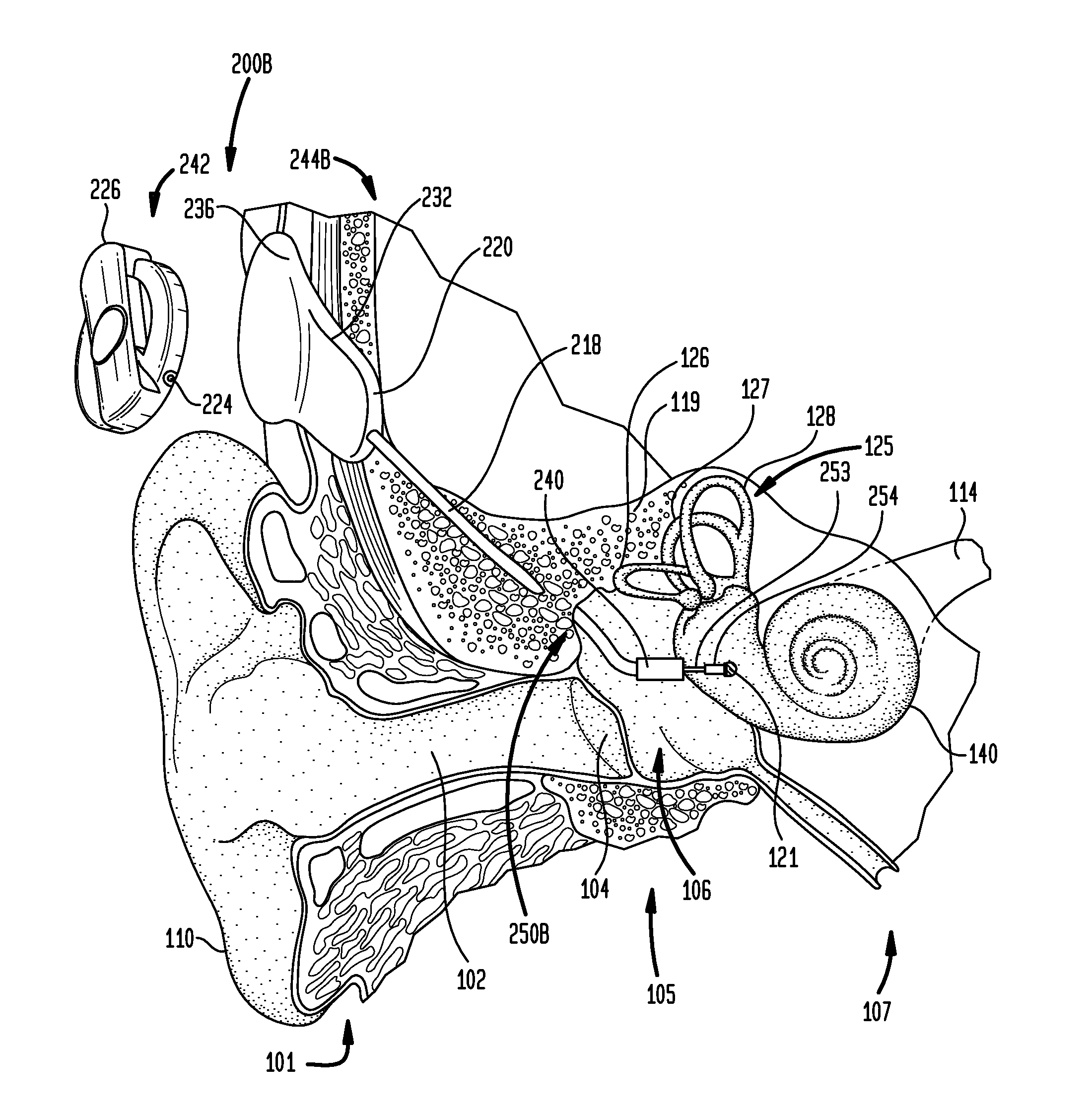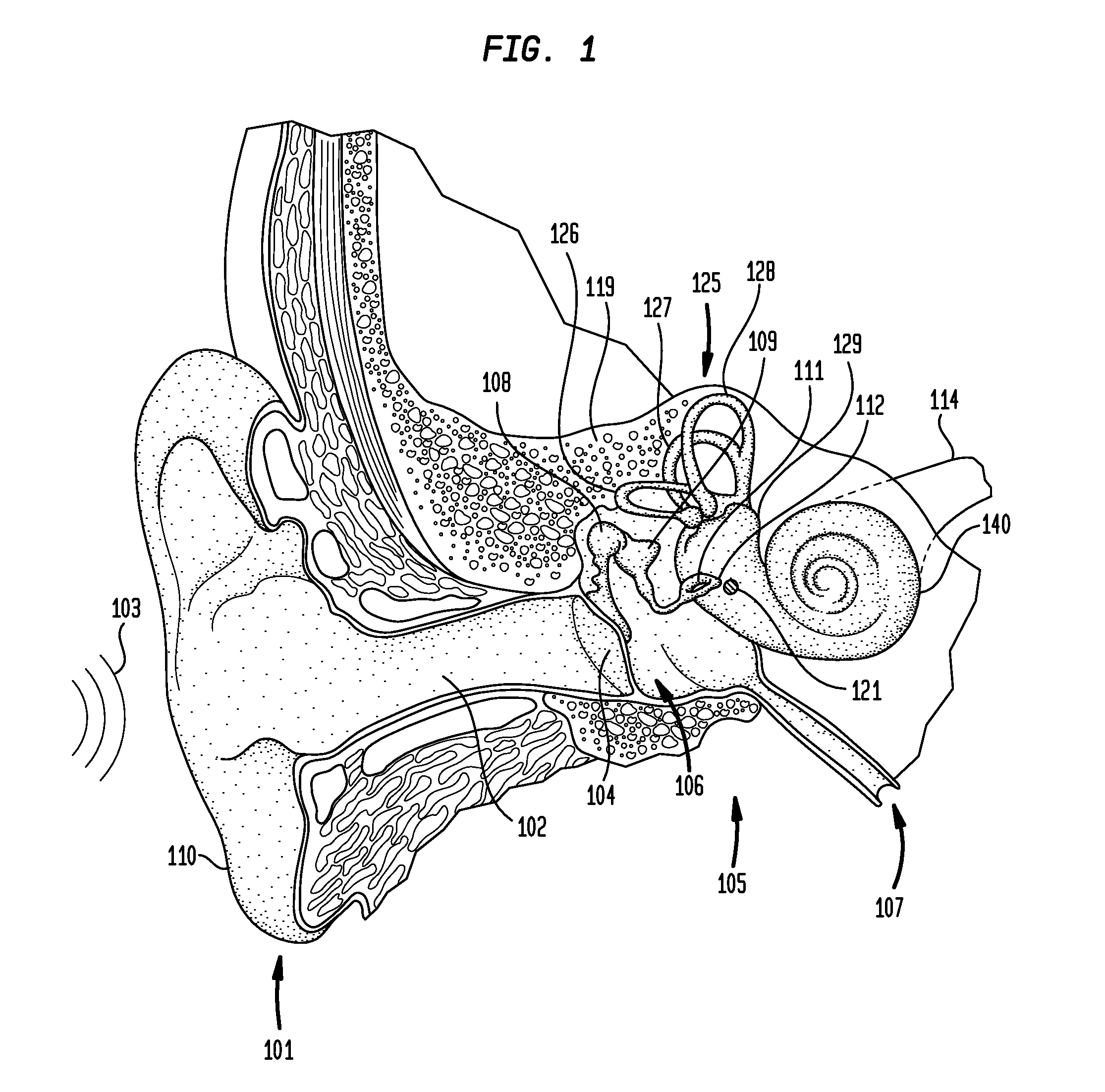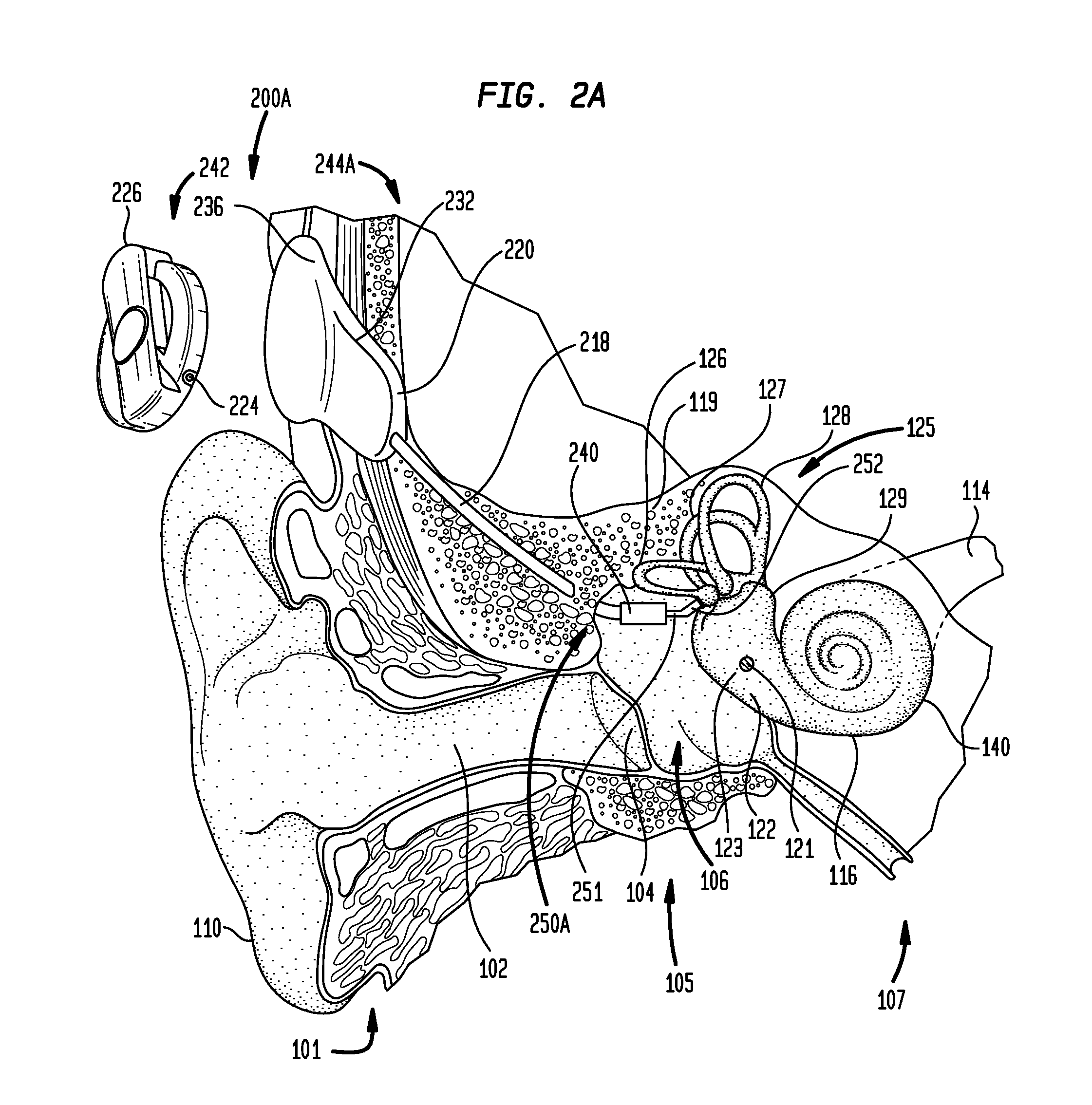Identifying hearing prosthesis actuator resonance peak(s)
a technology of hearing prosthesis and actuator, applied in the field of hearing prosthesis, can solve the problems of conductive hearing loss, hearing sensation, impeded normal mechanical pathways that provide sound to hair cells in the cochlea,
- Summary
- Abstract
- Description
- Claims
- Application Information
AI Technical Summary
Benefits of technology
Problems solved by technology
Method used
Image
Examples
Embodiment Construction
[0037]Embodiments of the present invention are generally directed to an auditory prosthesis comprising an actuator for providing mechanical stimulation to a recipient. The auditory prosthesis further comprises a measurement circuit for use in determining the resonance peak(s) of the actuator. In an embodiment, the measurement circuit measures the voltage drop across the actuator by applying a frequency sweep of the operational frequencies of the actuator. These measured voltages are then analyzed for discontinuities that are indicative of a resonance peak of the actuator. In an embodiment, rather than (or in conjunction with) measuring the voltage drop across the actuator, the measurement circuit measures the current through the actuator across the operational frequency range of the actuator and then analyzes the measured currents for discontinuities indicative of a resonance peak of the actuator.
[0038]In another embodiment, rather than using a frequency sweep to measure voltages an...
PUM
 Login to View More
Login to View More Abstract
Description
Claims
Application Information
 Login to View More
Login to View More - R&D
- Intellectual Property
- Life Sciences
- Materials
- Tech Scout
- Unparalleled Data Quality
- Higher Quality Content
- 60% Fewer Hallucinations
Browse by: Latest US Patents, China's latest patents, Technical Efficacy Thesaurus, Application Domain, Technology Topic, Popular Technical Reports.
© 2025 PatSnap. All rights reserved.Legal|Privacy policy|Modern Slavery Act Transparency Statement|Sitemap|About US| Contact US: help@patsnap.com



